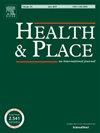评估全球位置系统串珠手镯的有效性,以改善肯尼亚牧民妇女产前保健、卫生设施分娩和产后护理服务的吸收
IF 4.1
2区 医学
Q1 PUBLIC, ENVIRONMENTAL & OCCUPATIONAL HEALTH
引用次数: 0
摘要
产前保健(ANC)、卫生机构分娩(HFD)和产后护理(PNC)是改善全球孕产妇和儿童保健的主要指标。本研究调查了一个原型的全球定位系统(GPS)串珠手镯干预在提高孕产妇保健服务的吸收在游牧社区的有效性。方法将107例妊娠早期孕妇随机分为干预组(n = 52)和对照组(n = 55)。干预组在分娩前6个月和分娩后10个月的16个月的研究时间内给予gps串珠手环。同时,非干预组接受常规的产前和产后护理。使用IBM SPSS 27.0版进行Pearson X2检验和多变量逻辑回归分析,遵循合并报告试验标准(CONSORT)指南。模型拟合采用综合模型系数检验、分类表、Nagelkerke R方和Hosmer-Lemeshow检验。显著性水平设为p <;0.05. RCT已注册(ISRCTN15438206), GPS串珠手环已获得肯尼亚工业产权研究所(KIPI)专利号:KE/UM/19/1211。结果干预组妇女与对照组妇女相比,4次以上ANC就诊的可能性高9倍(AOR 9.13, 95% CI 1.75-47.54),产后护理的可能性高3倍(AOR 2.71, 95% CI 0.74-9.96),活产的可能性高4倍(AOR 3.56, 95% CI 0.47-27.07)。在分娩地点方面,各组之间没有显著差异,这表明,虽然GPS可能有助于获得卫生设施,但它并没有根据地点显著改变分娩结果,但有可能在卫生设施中分娩(OR 2.0, 95% CI 0.39-8.21)。其他变量,如年龄组、文化水平和与卫生设施的距离,在统计上没有显着的关联。三种模型拟合评价方法均表明模型拟合良好。结论gps串珠手环可显著提高ANC、HFD和PNC出勤率,降低婴儿死亡率。未来的研究应侧重于改进这些技术,以探索这些干预措施在不同牧民群体中的长期影响和可扩展性,以改善孕产妇和儿童保健。本文章由计算机程序翻译,如有差异,请以英文原文为准。
Evaluating the effectiveness of the global position system beaded bracelets to improve the uptake of antenatal care, health facility delivery, and post-natal care services among pastoralist women in Kenya
Background
Antenatal Care (ANC), Health Facility Delivery (HFD), and Postnatal Care (PNC) are the leading indicators of improving maternal and child healthcare globally. This study investigated the effectiveness of a prototyped Global Position System (GPS) beaded bracelet intervention in enhancing maternal healthcare services uptake among pastoralist communities.
Methods
In this Randomized Control Trial (RCT), one hundred and seven pregnant women in their first trimester were randomly allocated to the intervention group (n = 52) and control group (n = 55). A GPS-beaded bracelet was given to the intervention group for the study duration of 16 months (6 months before delivery and 10 months after delivery). Meanwhile, the non-intervention group received routine ante- and postnatal care. The Pearson X2 test and multivariate logistic regression analysis were conducted using IBM SPSS version 27.0, following the Consolidated Standards of Reporting Trials (CONSORT) guidelines. Model fit was assessed using, the Omnibus test of model Co-efficient, classification table, Nagelkerke R Square, and the Hosmer-Lemeshow test. The significance level was set at p < 0.05. RCT was registered (ISRCTN15438206), and the GPS beaded bracelet was patented by Kenya Industrial Property Institutes (KIPI) NO: KE/UM/19/1211.
Results
Women in the intervention group have nine-fold higher likelihood of having more than four ANC visits (AOR 9.13, 95 % CI 1.75–47.54), three-fold higher likelihood of having postnatal care (AOR 2.71, 95 % CI 0.74–9.96), and a fourfold higher of giving live birth (AOR 3.56, 95 % CI 0.47–27.07) compared to women in the control group. No significant differences were noted between groups when it comes to place of delivery, indicating that while GPS may facilitate access to health facilities, it did not markedly change delivery outcomes based on location, but there is likelihood of delivering in a health facility (OR 2.0, 95 % CI 0.39–8.21). Other variables like age group, literacy level, and distance from health facility didn't exhibit a statistically significant association. All three methods of model fit assessment indicated good model fit.
Conclusion
The study result showed the effectiveness of GPS-beaded bracelets by significantly improving ANC, HFD, and PNC attendance and reducing infant mortality. Future studies should focus on refining these technologies to explore the long-term impacts and scalability of such interventions across diverse pastoralist populations to improve maternal and child healthcare.
求助全文
通过发布文献求助,成功后即可免费获取论文全文。
去求助
来源期刊

Health & Place
PUBLIC, ENVIRONMENTAL & OCCUPATIONAL HEALTH-
CiteScore
7.70
自引率
6.20%
发文量
176
审稿时长
29 days
期刊介绍:
he journal is an interdisciplinary journal dedicated to the study of all aspects of health and health care in which place or location matters.
 求助内容:
求助内容: 应助结果提醒方式:
应助结果提醒方式:


